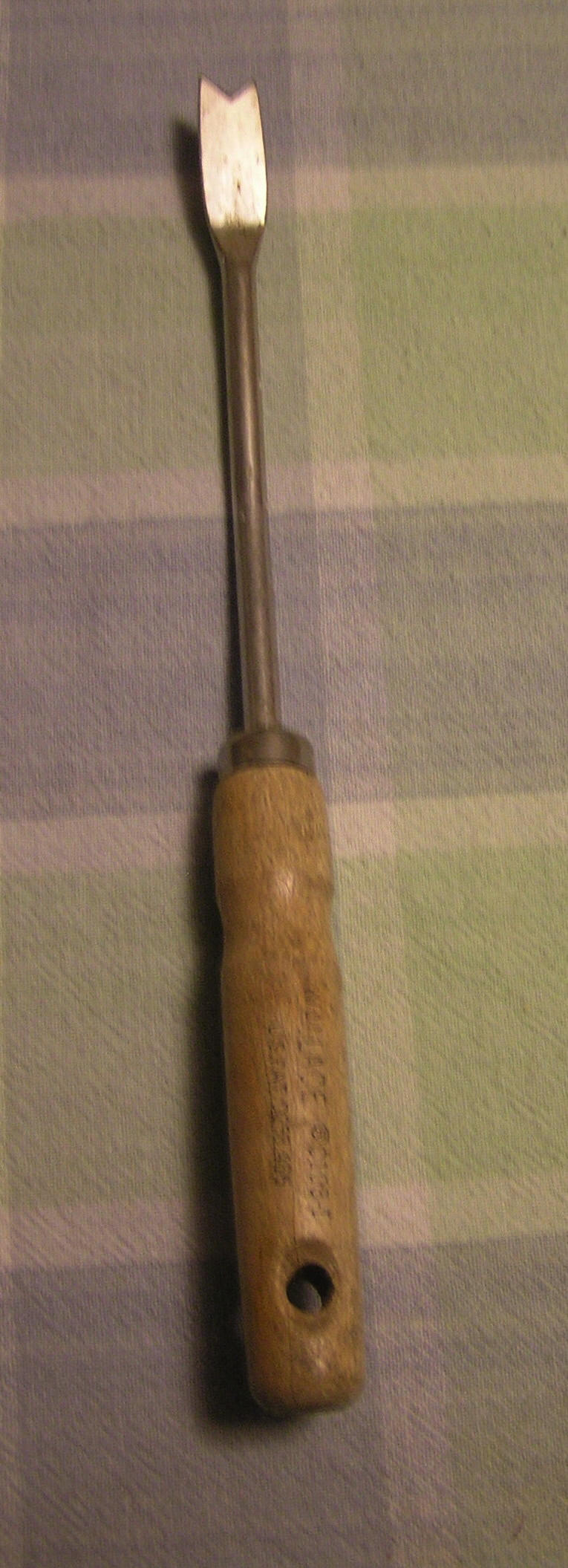|
What’s Old is New Again
Martie Young
Adams County Master Gardener
 As a child in the 1940s I didn’t know or care what kind of lawn I was playing on—as long as bees didn’t sting me. Actually, it
was called ‘the backyard’ back then. Grass was important as something relatively soft to walk on and it was certainly more attractive than mud or stones; grass had become popular from observing pictures of large estates or
the better houses in town that seemed luxurious because of the expanse of green. Most likely the man of the house mowed the lawn with a push mower—maybe once a week or less depending on family circumstances, and if you are
pushing a mower, you tend to keep your lawn area relatively small. As a child in the 1940s I didn’t know or care what kind of lawn I was playing on—as long as bees didn’t sting me. Actually, it
was called ‘the backyard’ back then. Grass was important as something relatively soft to walk on and it was certainly more attractive than mud or stones; grass had become popular from observing pictures of large estates or
the better houses in town that seemed luxurious because of the expanse of green. Most likely the man of the house mowed the lawn with a push mower—maybe once a week or less depending on family circumstances, and if you are
pushing a mower, you tend to keep your lawn area relatively small.
After WWII was over and many advances had been made with chemicals, we entered the world of ‘Better Living through Chemistry’—remember that slogan? I think it was DuPont Chemical Company who
popularized it with mixed results—you can take the slogan seriously and embrace chemicals or give it a tongue-in-cheek meaning that implies that we are subjected to too many chemicals.
 A popular chemical weed killer or herbicide known as 2, 4-D was developed in that era and it had the effect
of killing every broadleaf plant or weed it touched, including clover. In the ‘olden’ days all grass mixtures contained a percentage of white clover seed. Grass seed and clover seed mixed together provided a lawn that was
mostly green all summer—picture our local lawns in summer—they turn brown or dormant without regular watering; some patches may die, which leaves an empty space for a weed to fill in, and that begins the vicious circle of
planting, maintaining grass, and then killing the weeds that come up if the grass does poorly. What a lot of work and time to put into a lawn! A popular chemical weed killer or herbicide known as 2, 4-D was developed in that era and it had the effect
of killing every broadleaf plant or weed it touched, including clover. In the ‘olden’ days all grass mixtures contained a percentage of white clover seed. Grass seed and clover seed mixed together provided a lawn that was
mostly green all summer—picture our local lawns in summer—they turn brown or dormant without regular watering; some patches may die, which leaves an empty space for a weed to fill in, and that begins the vicious circle of
planting, maintaining grass, and then killing the weeds that come up if the grass does poorly. What a lot of work and time to put into a lawn!
There is also the issue of watering your grass. Turf grass needs approximately one inch of water a week. If you have an efficient sprinkler system you may be able to measure accurately. If
you are a prophet maybe you can predict how much rain you will get or even whether it will be a rainy or dry summer. You probably should have a rain gauge and keep records of how much water your lawn is receiving. If you
water too frequently and at too shallow a depth you have promoted shallow roots and your grass will dry up even faster. And then a disease may attack your grass and wipe out a large segment; your solution to this may be to
spread more chemicals.
Clover to the Rescue
All the above problems can be avoided by mixing 5% clover into your seed mix. White clover is a legume plant like beans and alfalfa; it sucks nitrogen from the air and stores it in the clover
roots—clover really acts as free fertilizer storage bins for your lawn. If you leave your lawn clippings on the lawn after mowing you will probably not have to apply any other nitrogen fertilizer source.
Clover will out-compete other weeds and act as a weed shield for your lawn. Clover has strong, deep roots and it is very hardy and resilient. Clover remains green all year without water or
fertilizer. The presence of clover indicates good soil fertility. The clover flower also attracts honeybees. Just don’t go barefoot if the clover is blooming!
With all the good things I have listed about white clover, one must wonder why it isn’t sold as part of a grass mixture any more. Remember what I wrote about broad-leaf weed killers. The
developers and manufacturers couldn’t find a way to make 2, 4-D or other herbicides that wouldn’t kill clover so they simply encouraged people to think of clover as a weed. The manufacturers next step would have been to
formulate grass fertilizers that would keep grass green and growing well and fast (more mowing and more watering). For the suburban homeowner surrounded by a huge green lawn the care of the lawn has become almost a full-time
job.
If all this information makes you want to go back to a simpler time why not just Google ‘White Clover Seed. ‘ The clover known as Dutch clover is best suited to lawns since its height is more
closely matched to grass. Follow directions for seeding and watering—and don’t use broadleaf weedkillers. You will be provided with many seed sources for buying and planting this seed along with your turf grass seed. And
it’s early enough for you to be able to plant as soon as it warms up in the spring.
If dandelions and plantain plants appear as you establish your clover lawn, you may want to remove them. The recommended tool for their removal is a pronged knife tool found by an internet
search for ‘dandelion weeder’, ‘deep weed cutter’ or ‘asparagus knife’, see photo.
Read other articles on ecological gardening & native plants
Read other articles by Martie Young |